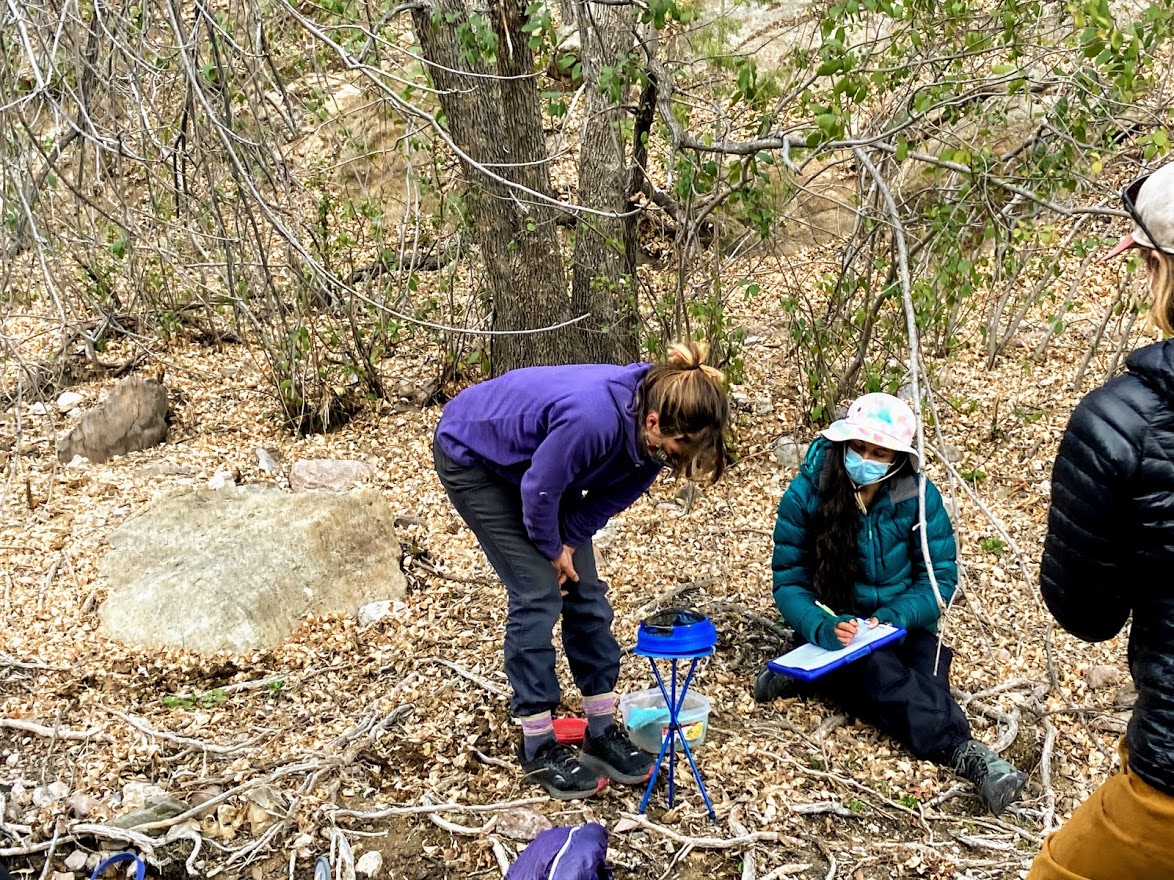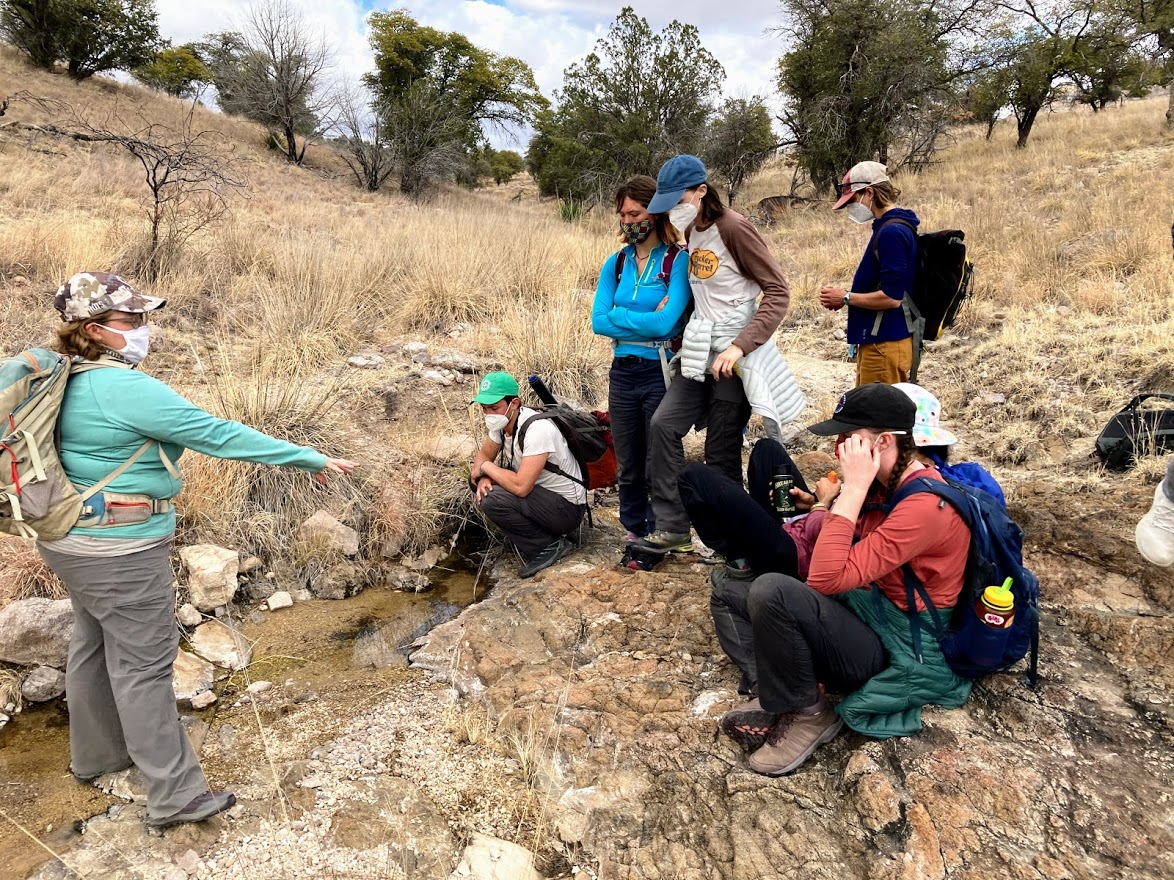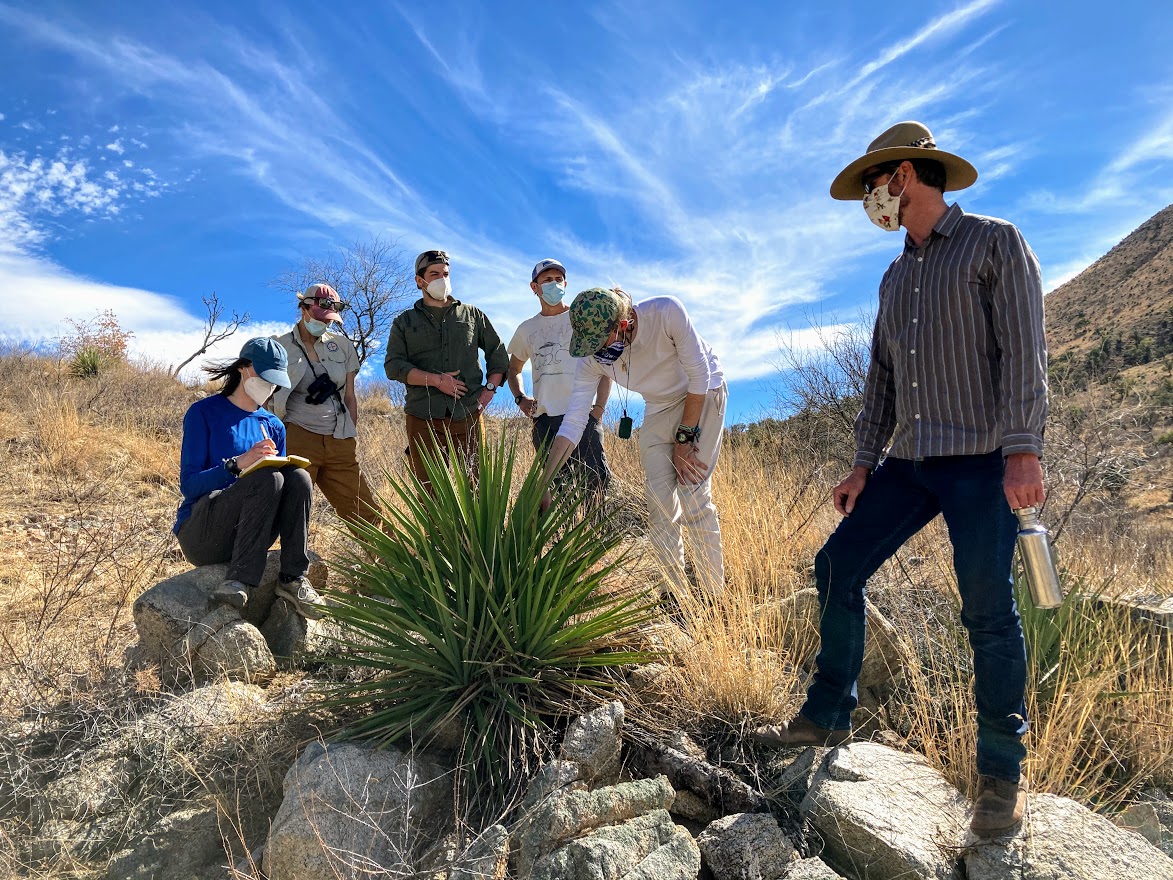
SIA staff Bryon Lichtenhan guides students from other regions of the country to distinguish between yucca, sotol, and agave in the field.
After spending the last few months planning for the Round River Conservation Studies (RRCS) first ever semester in the Sky Islands, I was ecstatic to finally spend time with them in the field over the past couple weeks.
RRCS is an ecological research and education organization dedicated to conservation strategies that are sustainable and tied to the communities of the landscape. Since 1991, they have worked with partners across the Americas, Asia, and Africa.
One of their hallmark programs is the student program, designed to “encourage and expand the commitments, minds and spirits of future conservationists by cultivating an active, informed and inspired constituency of young scholars, as conservation scientists, artists, activists, and advocates by providing innovative conservation education and leadership training.” These semester-long programs offer real-world experience in conservation science and stakeholder collaboration, as well as provide academic credit for undergraduate students.
When the COVID-19 pandemic brought all students studying abroad home last March, RRCS turned to a wild, magnificent place a little closer to home (and with less travel restrictions) to study—the Sky Island region! This semester, they are partnering with Sky Island Alliance to work in the Sky Island borderlands, learning about the natural history, applied ecology, and field methods while contributing to the research collected through our water and wildlife programs.
After arriving in early February, the RRCS group set up a base station and dove right in. They’ve been trained up in local plant identification to conduct vegetation and habitat surveys at our 48 Border Wildlife Study cameras on the U.S. side. They are checking our wildlife cameras and collecting data as part of the study too.
And now, they’ve been introduced to finding springs and off trail navigation, have completed Spring Seeker surveys, and have measured water flow and water quality too.
We’re so excited to continue this collaboration into April and can’t wait to see what they do as they visit water sites, mountain ranges, and wildlife habitat throughout the region in their jam-packed semester!
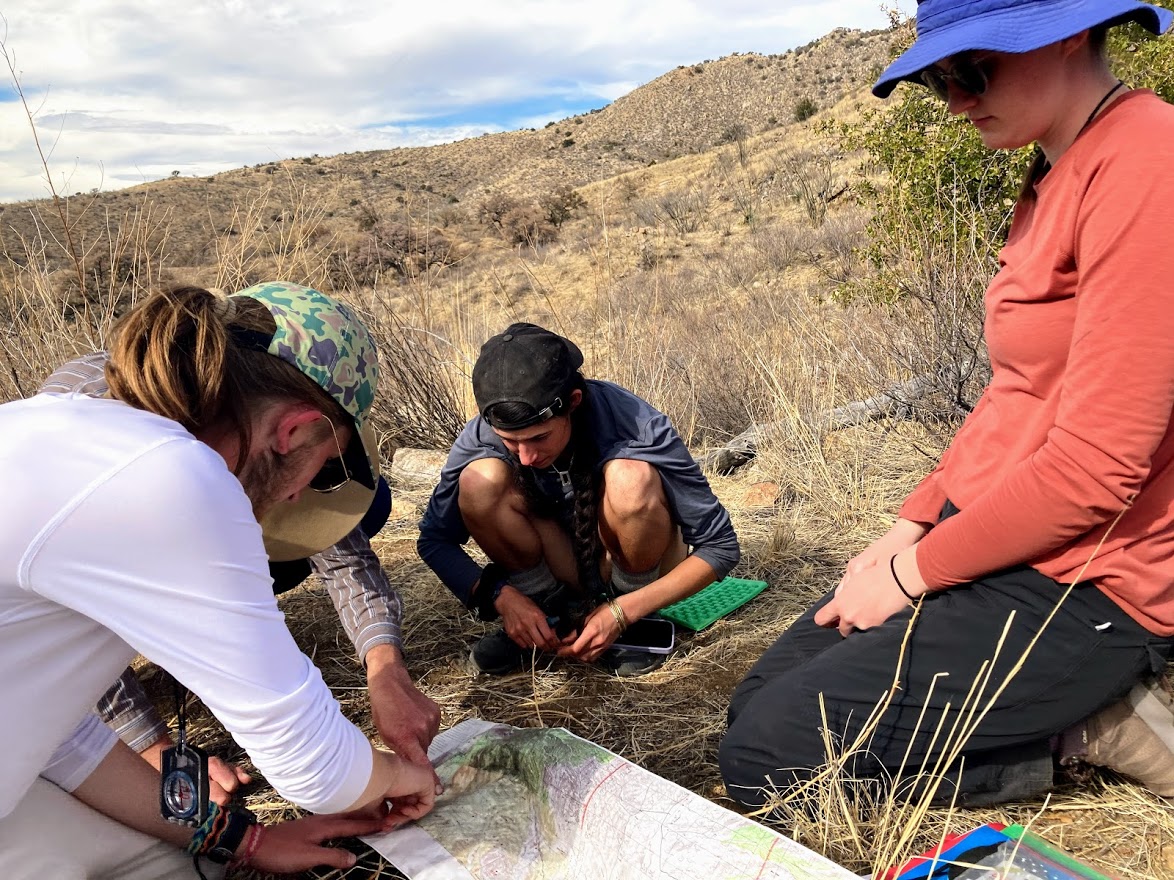
RRCS students orient themselves to the Border Wildlife Study, stretching along the U.S.-Mexico border from the Patagonias to the Huachucas.
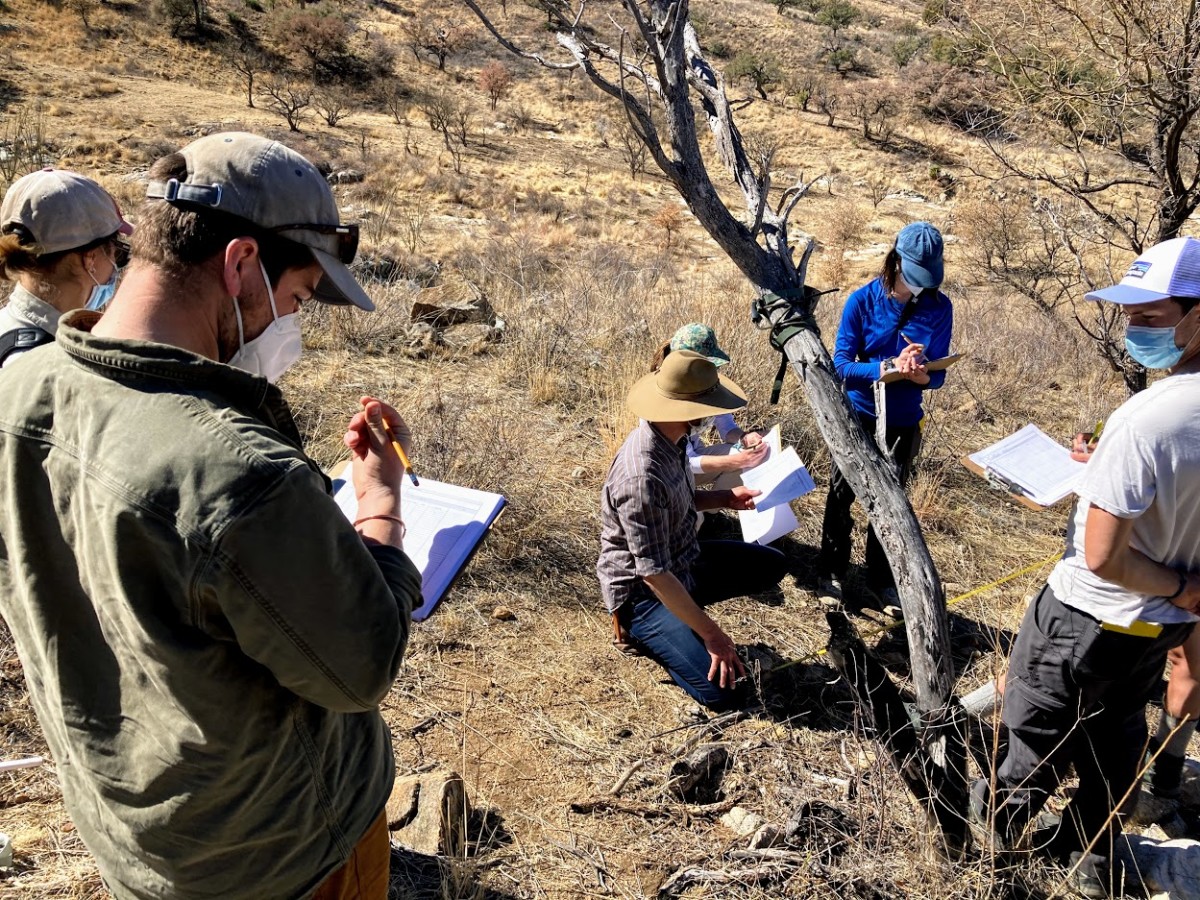
Students conduct vegetation and habitat surveys using a point-intercept method along 50 meter transects radiating out from our Border Wildlife Study cameras.


